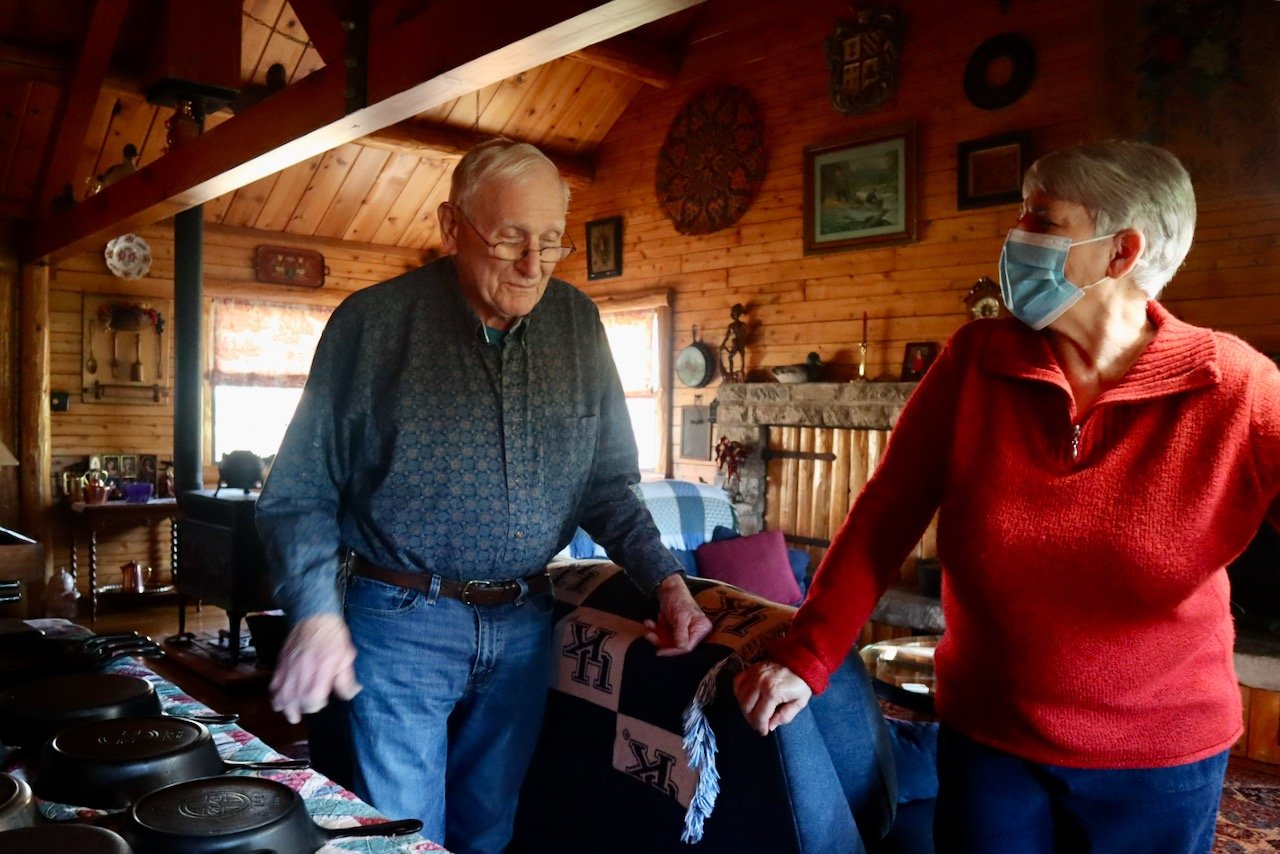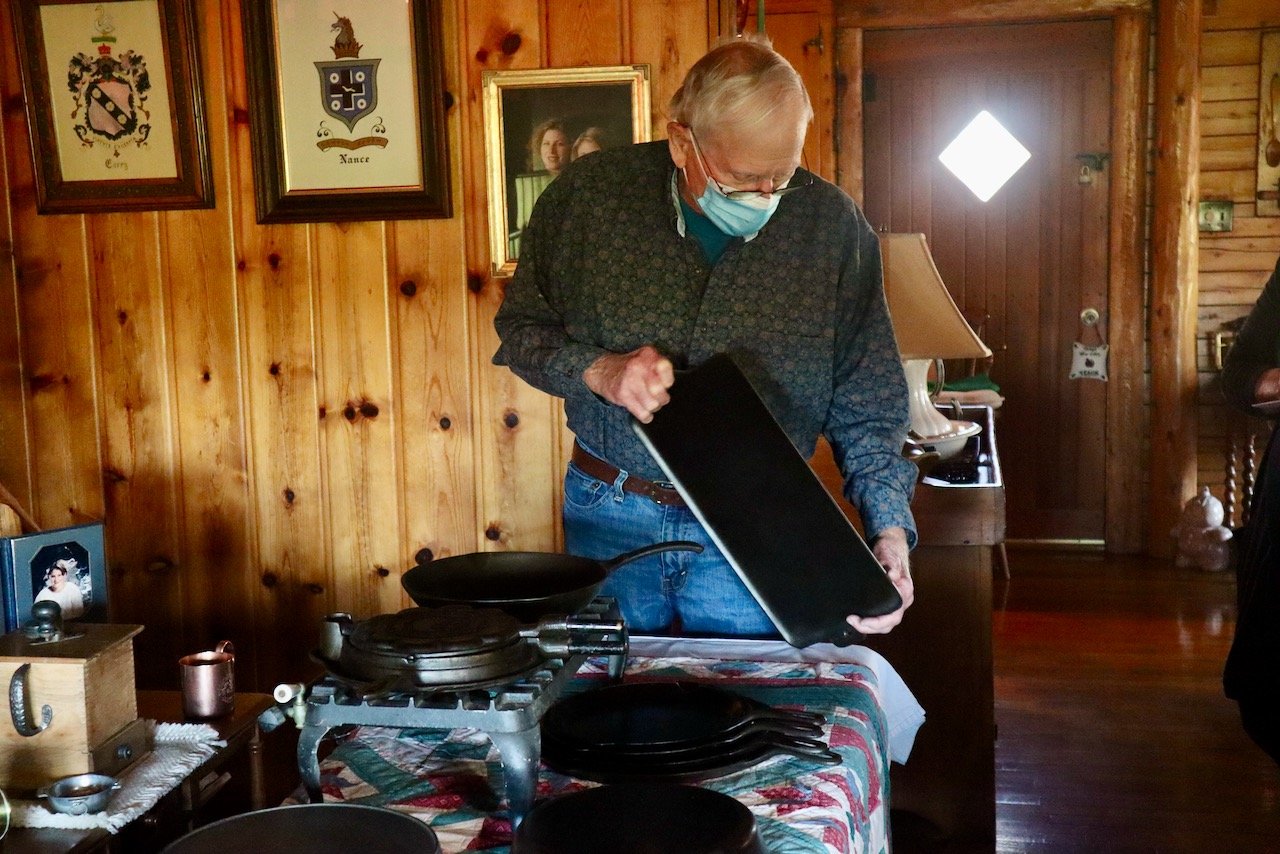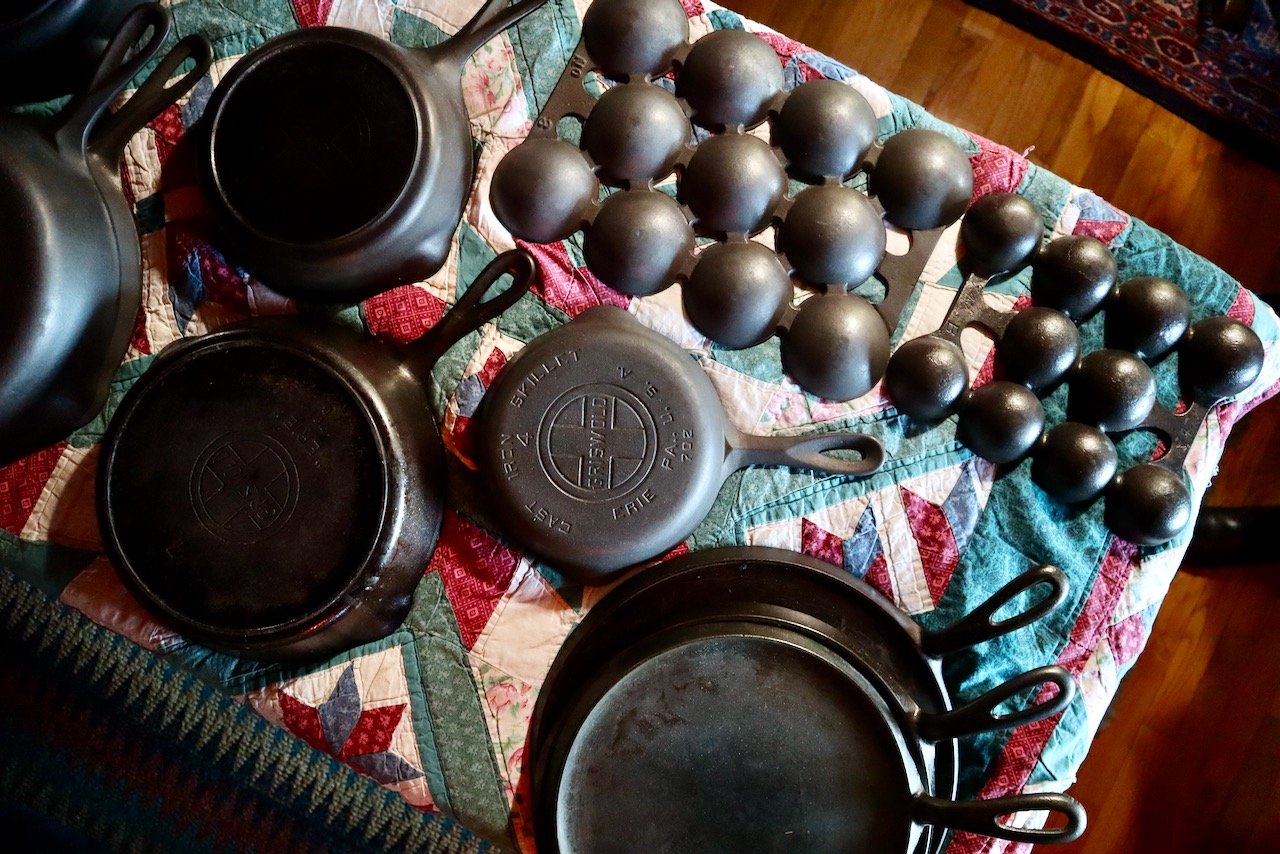Forged
Story by Donna Hecker and photography by Talitha Schroeder
Have nothing in your houses that you do not know to be beautiful or believe to be useful — William Morris
Jim and Jan Nance have forged a life together out of hand-hewn materials, surrounding themselves with antiques and crafts as beautiful as they are useful.
The couple lives in a log home on the Elkhorn Creek, built over two years with a lot of help from friends, especially Jan’s retired dad, then in his late 60s. With daughter Tera in her toddler years and surprise baby Heather on the way, Jan admits that her ability to do heavy work was limited.
Their home is made of white cedar logs with western red cedar trim, capped with a roof of Western red cedar shakes. The tongue and groove logs were left rough-hewn on the exterior and finished inside with a light sanding and coat of varnish. A 16’ cathedral ceiling supported by 18 fir purlins soars over the great room, everything anchored in place by a 32’ long beam of Douglas fir.
Over the great room’s stone fireplace is a hooked rug designed and worked by Jan’s grandmother. It’s no less beautiful for being incomplete. The ghostly outline of her hand-drawn pattern only heightens the vibrant colors of the finished flowers.
The beds are covered in quilts, pieced and sewn by hand. One bedroom holds an Eastlake bed and dresser, bought by Jim’s mother for $25 as his family made their home in Bell Buckle, Tenn. while his dad was deployed to Okinawa.
A pot rack hangs in the kitchen, fashioned from discarded copper pipes that once transported corn liquor on its path to bourbon at the original Oscar Pepper Distillery. Old stoneware bowls nest on the countertop, ready for the next batch of pancake batter or sourdough.
And those iron pots and pans! They’re everywhere: a couple of Dutch ovens stand sentry on the hearth; a tea kettle rests on a wood stove, itself made of iron; skillets and griddles hang from the copper pot rack.
Since the early 1980s, Jim has collected and restored iron cookware — skillets in every diameter, slope-sided chef’s skillets, griddles and skillet-griddles, muffin and brownie pans, bundt cake pans, waffle irons, chicken fryers — ultimately amassing more than 400 pieces.
Perhaps it was the sheer heft of iron, its physical weight and form, that appealed to Jim, who taught kinesiology at the University of Kentucky for 35 years. After all, what could be more elemental, more functional, more enduring than an iron skillet, made of molten metal and cast in sand?
Thought to have originated in China around 600 BCE, cast iron cookware is created by heating pig iron and pouring it into a sand mold, which has a higher melting point than metal. The mold is broken apart when the metal cools and the piece emerges intact, to be sanded smooth before use. The method hasn’t changed much over time except to incorporate modern-day automation during the smelting and pouring processes.
Kentucky was America’s third largest iron producer in the late 18th and early 19th centuries. Our first iron works, Bourbon Iron Works, was built in 1791 and the last was the Fitchburg Furnace (within today’s Daniel Boone National Forest), completed in 1868. The iron produced at Kentucky’s smelters was made into nails and hand tools, munitions and yes, kettles.
Jim’s fascination with cast iron began at an outdoor cooking workshop in Wyoming, where he met cookbook author and Today Show personality Dian Thomas. Campfire cuisine was hardly novel to Jim and Jan, who spent their honeymoon on a 61-day road trip, but Dian’s cast iron Dutch oven really opened up a new frontier.
On Dian’s advice, Jim started scouring flea markets and antique stores for Dutch ovens and other cast iron cookware. He became a self-educated expert on identifying, restoring and using iron skillets and pots and pans; he belongs to the Griswold and Cast Iron Cookware Association; and he has been the subject of numerous interviews, including a segment on KET’s Kentucky Collectibles.
Jim’s cookware was put to good use. For many years, he worked with disadvantaged youth, scout troops and 4-H kids; teaching camping skills, often alongside his good friend Dick LeMaster, a former extension agent for Fayette County. “My kids won’t eat that!” was a common threat from parents, rebutted by green beans and squash pulled from the garden and prepared with Dick’s seasoning expertise. The kids devoured it all; as Jim tells it, the food “went right up in their mouths.”
At Holly Hill Inn, we bake corn sticks in iron molds for dinner service. Our stovetop shelf is populated by cast-off skillets from Jim’s collection and when we opened Honeywood, he helped us source pieces for the kitchen there. Ouita says Jim has told her many times how the cast iron skillet business helped put his girls through college.
After 50 years of married life, much of it lived outdoors — both Jim and Jan were avid canoeists and family vacations were often spent camping or at the beach — the pace is a little slower these days. Jim sold most of his cast iron collection a few months ago and is down to only (!) about 50 pieces. He kept his passion and know-how though, and has compiled a list of tips for us to use in identifying, cleaning, curing and cooking in cast iron.
Jim’s expertise and enthusiasm sent us flying back to our own kitchens, flipping old skillets over and digging griddles and corn stick molds out of dusty boxes, looking for markings that might reveal their provenance; whether handed down as heirlooms, scored at garage sales, or rescued from a garbage can. No matter where they come from, our skillets all have stories to tell. And they’ll be passed on to the next person with a little extra burnish and a few new chapters.
The sunlight was fading fast on that cold winter afternoon when we left Jim and Jan’s hilltop home, but we went away feeling the warmth of having spent time in a house filled with treasures which had been made by someone, and which were known to be beautiful, believed to be useful and which, more than anything, embodied the wealth of memories forged in a family’s life well-lived.
© 2022, Holly Hill Inn/Ilex Summit, LLC and its affiliates, All Rights Reserved
Related Content
Jim Nance’s Cast Iron Tips
Learn how to identify, restore, cook, and care for your cast iron the right way with these tips from Jim.





